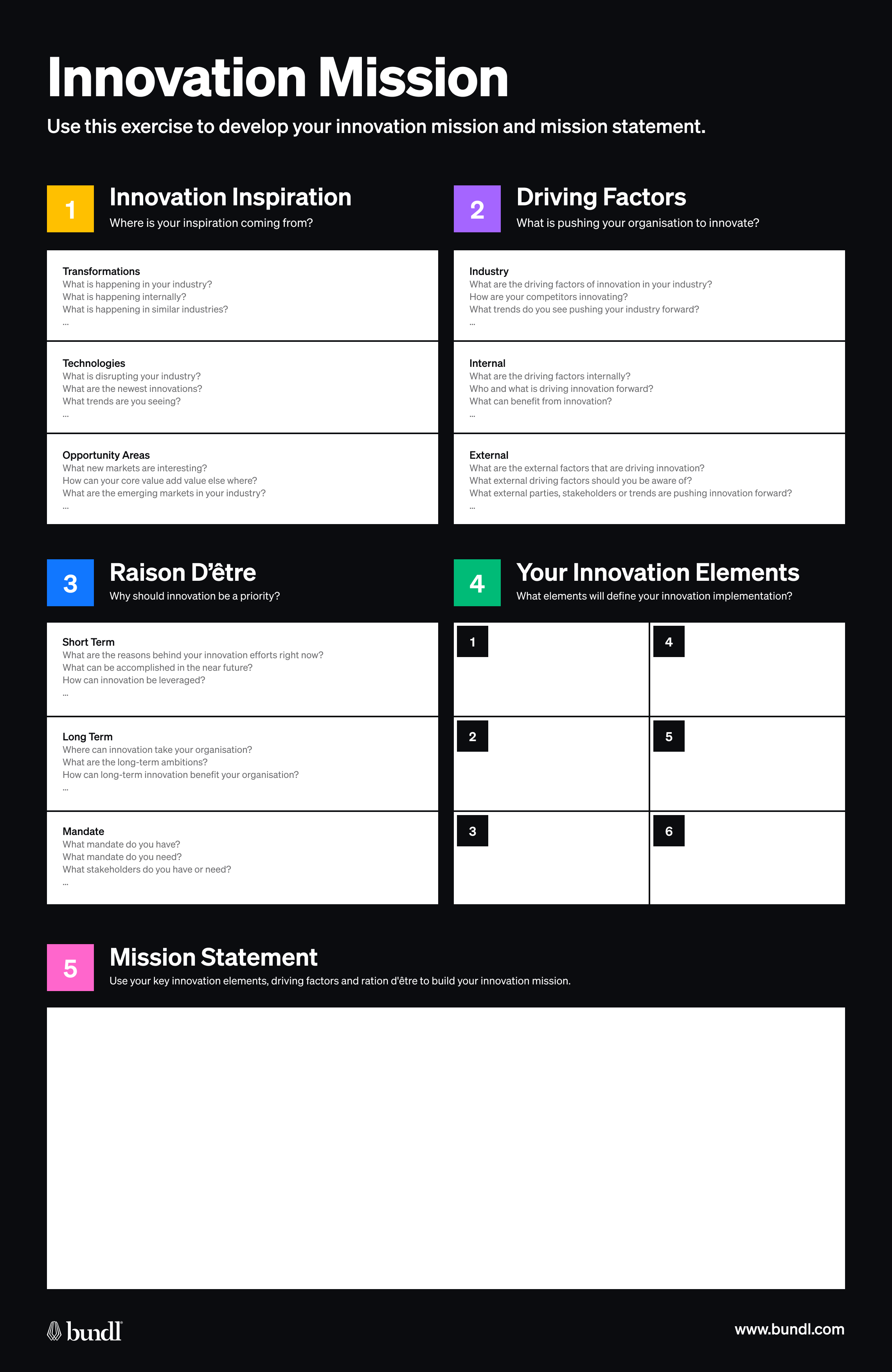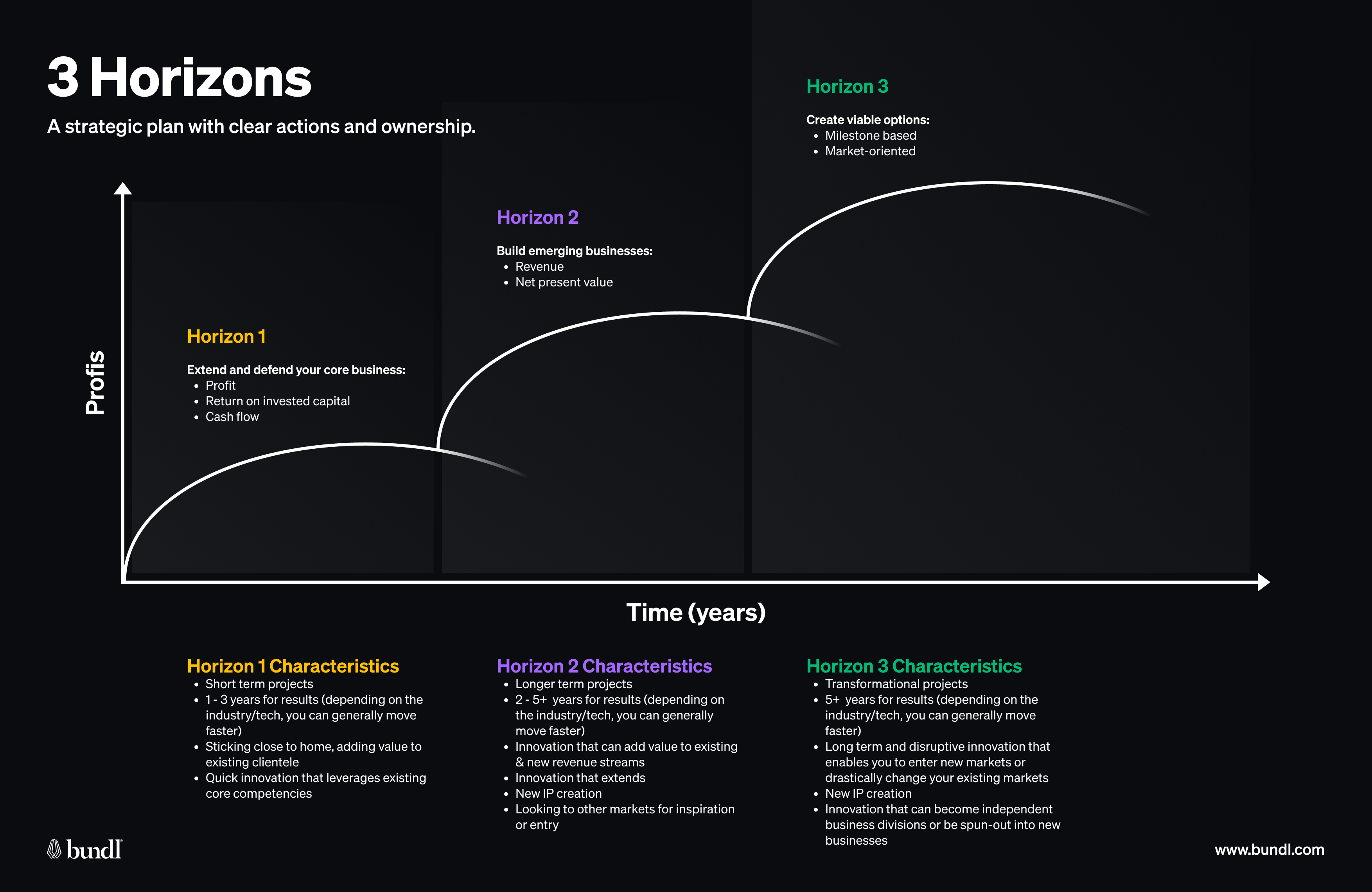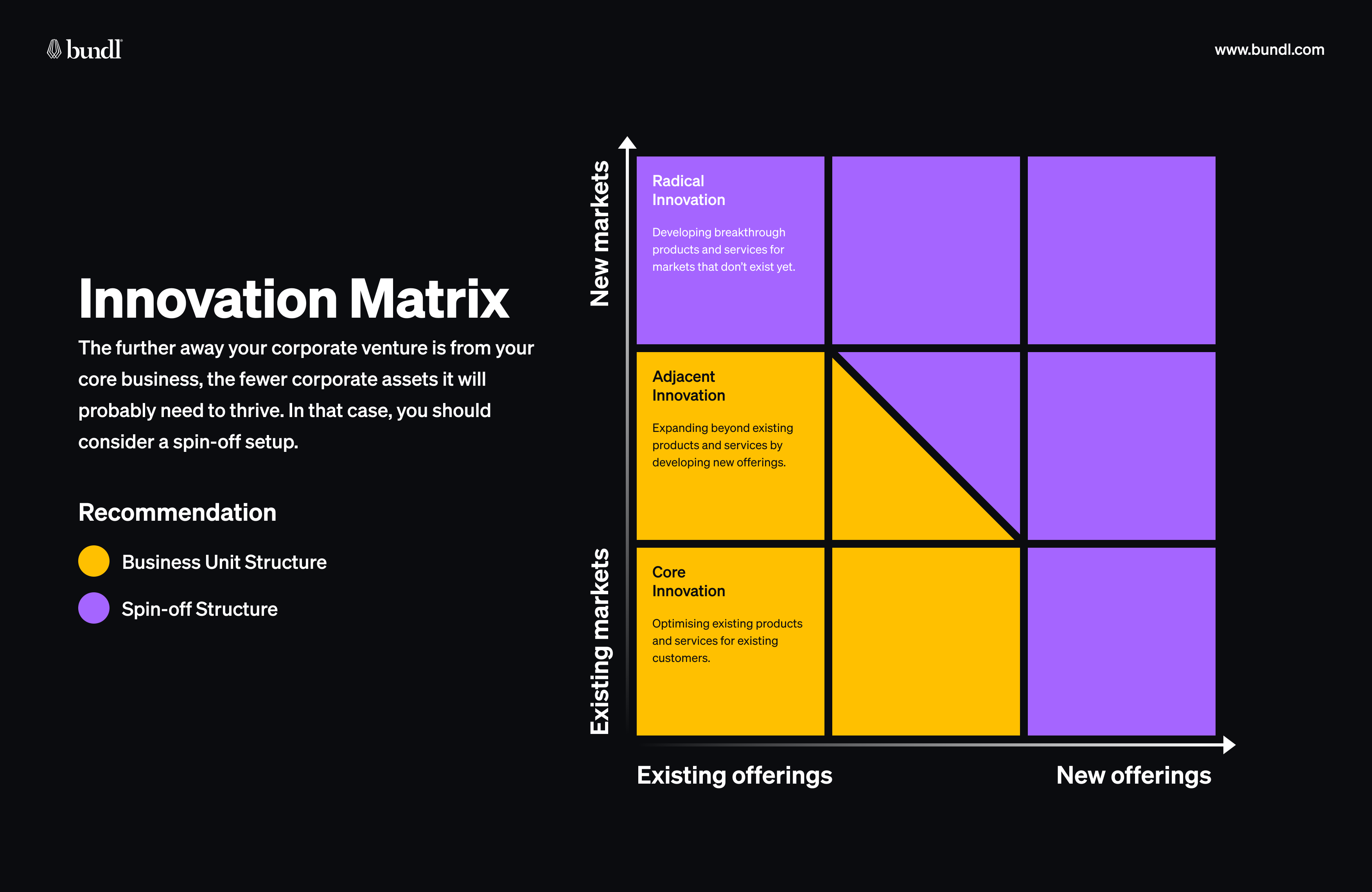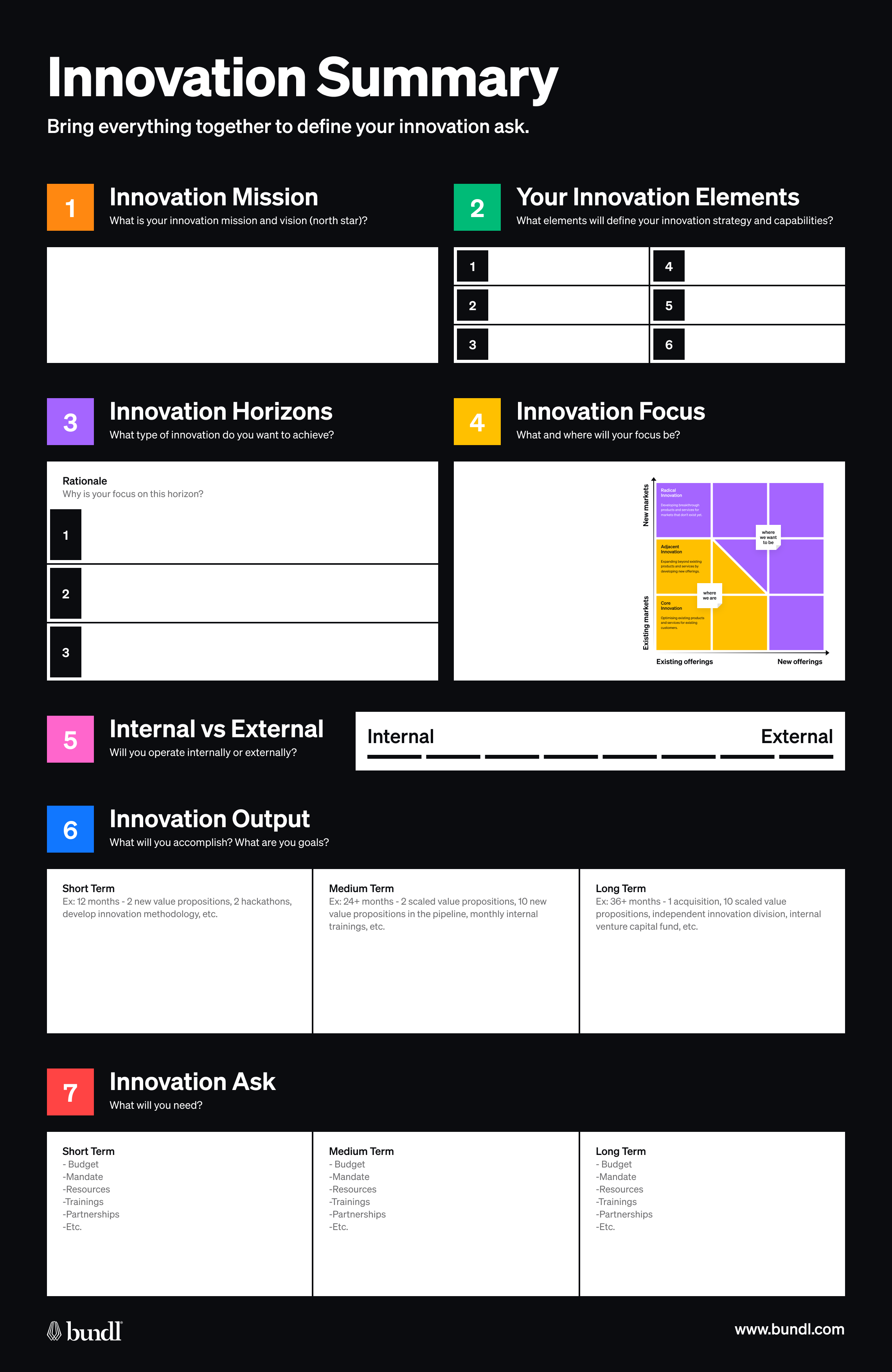Key takeaways
Most forward-thinking enterprises are keenly aware that a strong corporate innovation strategy is the key to longevity and long term success. The challenge is that “corporate innovation” can be an abstract concept, making it difficult to translate into a concrete and actionable strategy.
As a result, companies often get stuck either talking about or trying to understand innovation, delaying the process by months or even years. In the meantime, disruptive startups are redefining industries, identifying hidden market gaps, and leveraging the latest tech and business models to fill them.
The impact on our corporate landscape has been quite drastic:
- 52% of Fortune 500 companies have disappeared from the market since 2000.
- 75% of S&P companies are expected to fall off the list by 2027.
And the speed of disruption only increased after the 2020 pandemic hit.
The only way to really understand innovation is by doing it, getting your hands dirty and learning along the way. Corporations are actually in pole position to own this space due to the wealth of resources (beyond financial) available to them. These eight practical actions will guide your journey and ensure you get the solid start you need to build a winning corporate innovation strategy.
Let’s dive right in.
Explore our global list of corporate ventures with over 200 examples you can sort by business model, industry, parent company and more!
Step 1: Establish the mission of your corporate innovation strategy.

Before you start building the future, you have to know where you stand in the present. Take some time to examine what the direction, perspective and mandate of your new strategy will be. Here are some of the questions you and your team should consider:
- What do we know about corporate innovation?
- What makes us innovative?
- What factors will drive and inspire our strategy?
- What disruptive threats are we currently facing?
- Do we have an innovation mandate?
Once you’ve answered these questions, you’ll have a more concrete idea of what your overall mission will be.
Step 2: Pinpoint the identity of your corporate innovation strategy.

This step will provide an answer to the question: What is our potential?
Your innovation identity is crafted by having an objective understanding of where you are today and where you want to be in the future. Consider some of the following questions:
- What are some of our long- and short-term ambitions?
- What are some of the milestones we want to achieve?
- What corporate assets can we leverage to reach our goals?
- What resources are we missing to turn our goals into a reality?
Once you’ve established your ambitions and factored in the resources you’ll need to get there; you’ll have the building blocks you need to build the foundation of your new strategy.
Step 3: Make it a win-win situation.

One of the best ways to ensure the long-term success of your strategy is to make sure it aligns with your broader corporate goals. Of course, the innovation process is disruptive by nature, but unless it contributes to your organisation’s overall objectives, chances are it won’t go very far.
Make sure your company’s short and long-term objectives are clearly defined and that your innovation strategy facilitates the process of bringing those objectives to life. Remember, innovation should be a pillar of inspiration and execution, pushing an organisation closer to its goals, not further away from them.
Step 4: Determine your innovation horizons.

Innovation exists on a broad spectrum and can go from incremental to radical depending on your goals and ambitions. Determining your innovation horizons will help answer the question: How disruptive will we be? McKinsey’s three horizons model is a useful tool to help you figure out what your short and long term growth goals are:
- Horizon 1 focuses on ideas that propel a company’s core business.
- Horizon 2 focuses on expanding core capabilities to tap into new markets.
- Horizon 3 focuses on creating all-new capabilities meant to disrupt existing markets.
Choosing which horizon to pursue is dependent on your organisational realities (e.g. bottlenecks, budgets, time constraints, etc.).
While it’s important to factor in any existing barriers, it’s just as important to remember that they can be overcome. New methodologies can be learned, new talent can be hired, and new capabilities can be taught. Keep that in mind when choosing your innovation horizons.
Step 5: Choose between internal and external innovation.

A crucial part of building your innovation strategy is figuring out whether it will be executed internally or externally.
- Internal - Innovation happens from within, and you have complete ownership of the entire process (e.g. in-house incubators, innovation labs, corporate ventures, etc.).
- External -
Innovation takes place outside of your structures and requires strategic partnerships, M&A capabilities and a defined investment strategy (e.g. external accelerators, CVC firms).
This will help you define where to place your focus and how to allocate your resources. Here are a few questions that can help you decide:
- Are you looking to add value to existing business units?
- Are you looking for entirely new revenue-generating opportunities (e.g. independent business units)?
- What kind of scale support capabilities do you have?
- What will your resource allocation be?
Step 6: Bring it all together with an innovation summary.

Now that you’ve defined your innovation mission, linked it to your corporate strategy, defined your horizons and created a detailed roadmap, it’s time for the pitch.
Start by creating an innovation summary that brings all these elements together and clearly defines the output you plan to deliver. This will help you formulate a clear “innovation ask” and call to action to facilitate internal sponsorship and buy-in.
Step 7: Design your innovation funnel.

Innovation is a marathon, with various important milestones along the way. Here are just a few of the big ones:
- Opportunity research
- Problem, solution and business model identification
- Validation phases
- Development
- Launch
- Spin-in vs spin-out
- Scale
The goal of this step is to create a framework and process to bring your new value proposition to life. Our innovation funnel tool is a great way to get started on things like clearly defining your phases, establishing your timeline, identifying your KPIs, and setting up your metrics of success.
Step 8: Build your innovation roadmap.

This step involves taking a look at the work you’ve done so far from a macro perspective to answer the question: How do we bring our goals to life?
Answering this question requires three key elements:
- Tangible goals - e.g. who your stakeholders will be, what initiatives you want to start, which methodologies you’ll use, etc.
- Clear points of action, e.g. create an innovation committee, build internal capabilities, establish partnerships, secure funding, etc.
- Ownership of execution, e.g. who is responsible? What is the timeline? etc.
No organisation is the same, each one requiring a different formula. Take an objective look at your organisation to help you understand how you can leverage your strengths and improve your weaknesses. Remember, innovation doesn’t happen overnight.
Get started today!
With all the changes taking place in today’s business landscape, innovation has become more vital than ever. The saying "Disrupt your own business, or somebody else will" has become a pervasive motto among corporate leaders - culminating in both stellar efforts and results.
Whichever direction you decide to take your innovation strategy (e.g. CVC, in-house incubator, acceleration, etc.), following the steps described above will enable you to:
- Solidify your innovation ask
- Understand the resources you need to succeed
- Define your timeline and milestones
- Ensure it all aligns with your corporate strategy
Download our new “8 Essential Actions to Define your Innovation Strategy” resource for more in-depth insights, and easy-to-use tools to build your innovation strategy in as little as two days.
8 essential actions to define your innovation strategy.
Develop your innovation strategy in 2-3 days with these action points and tools.











.svg)

.webp)